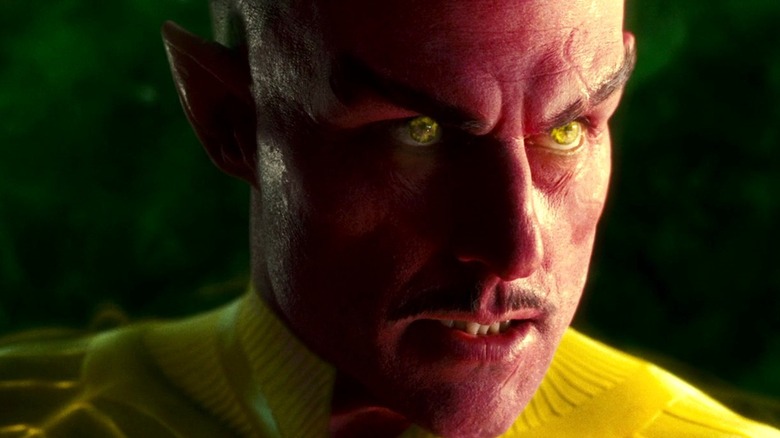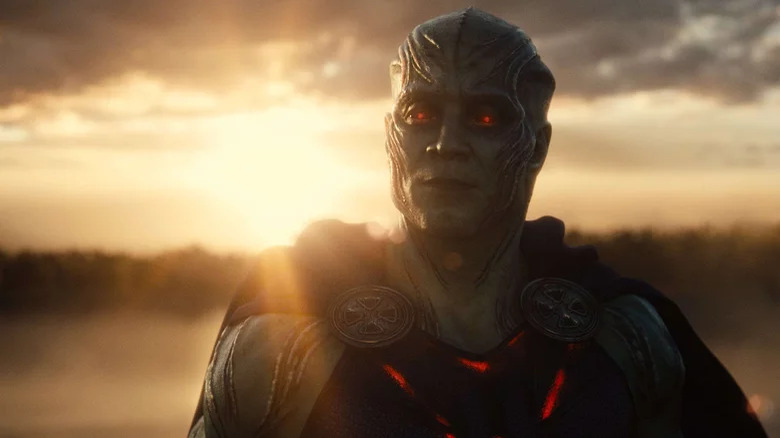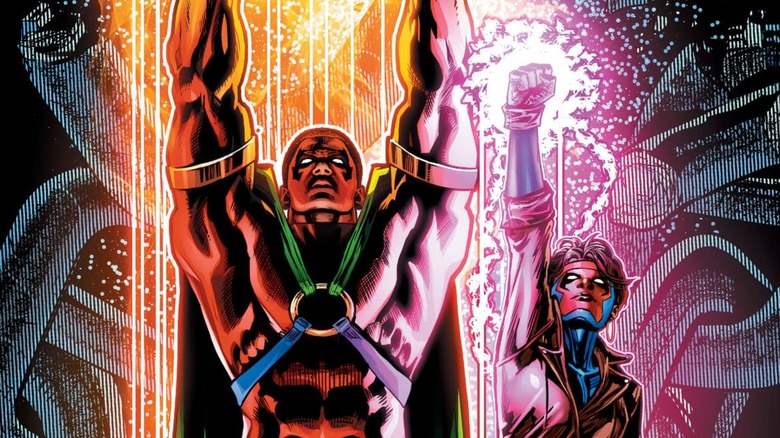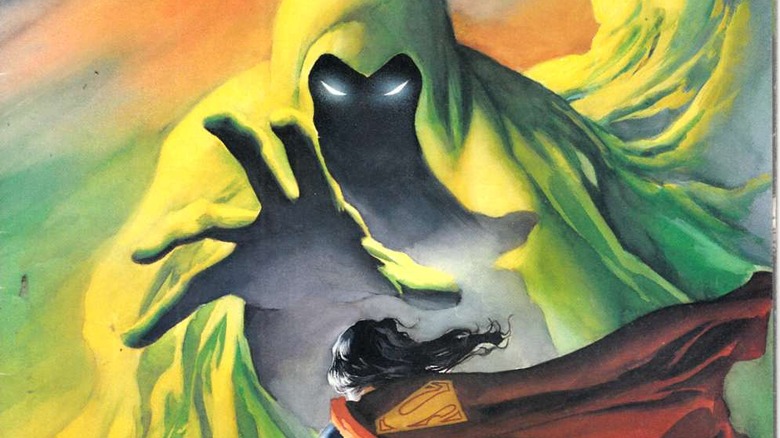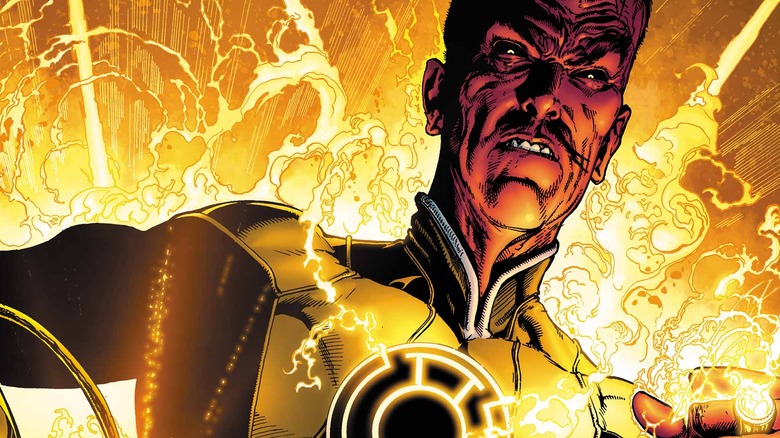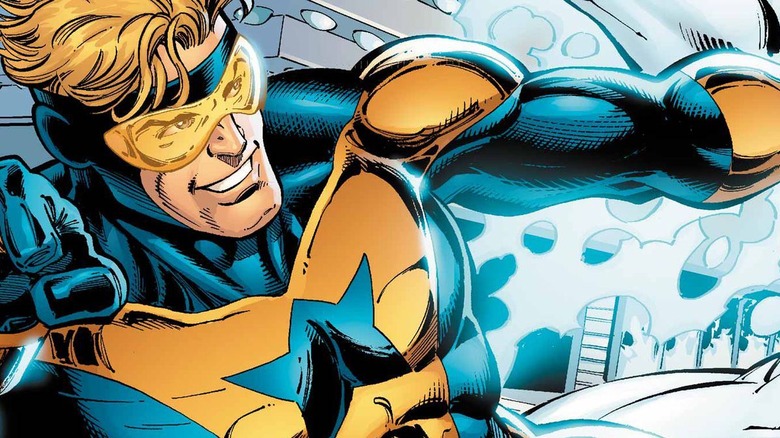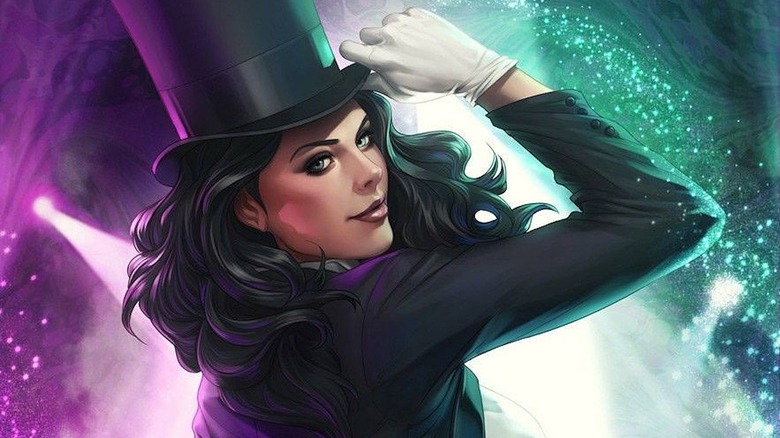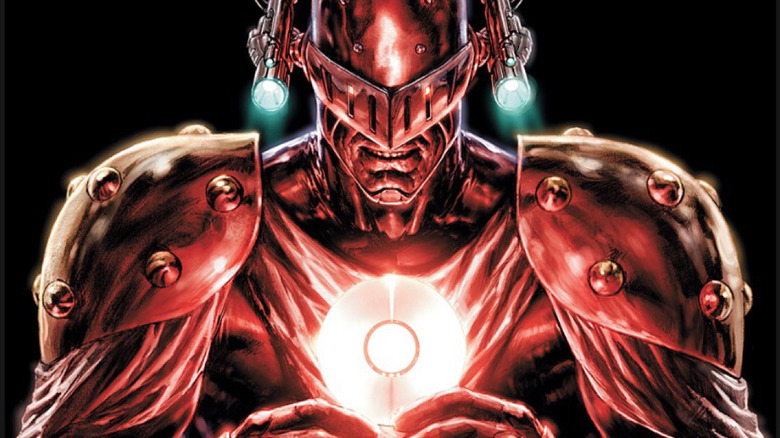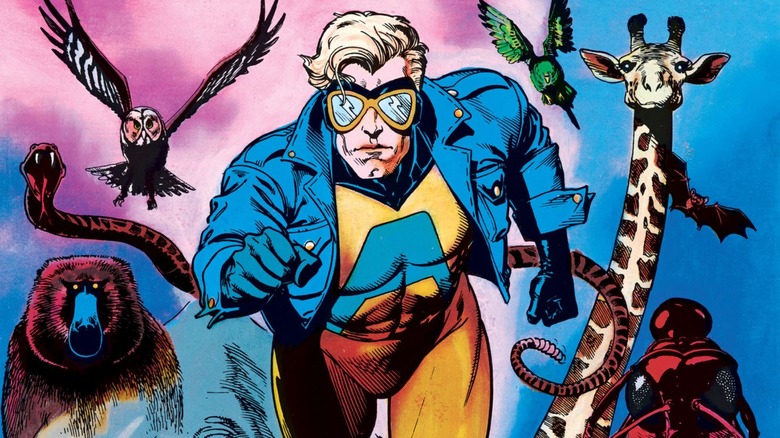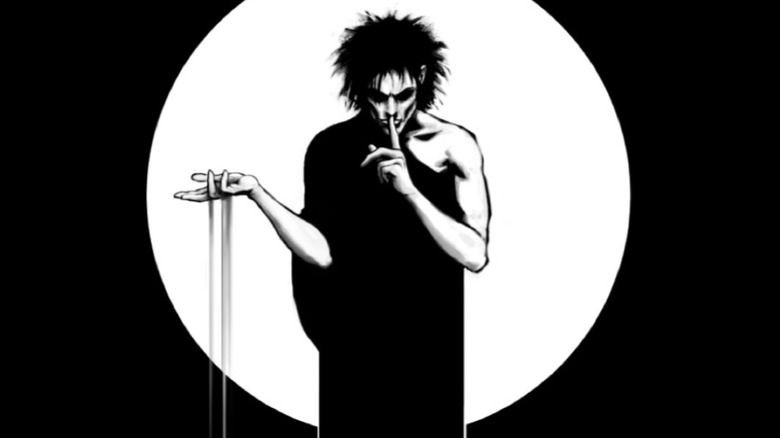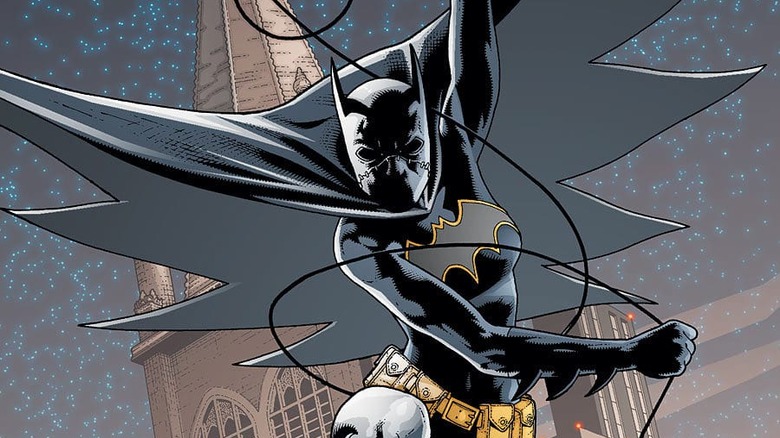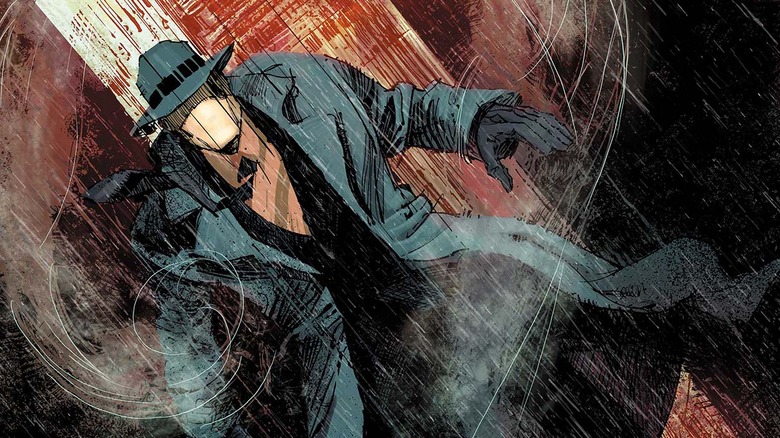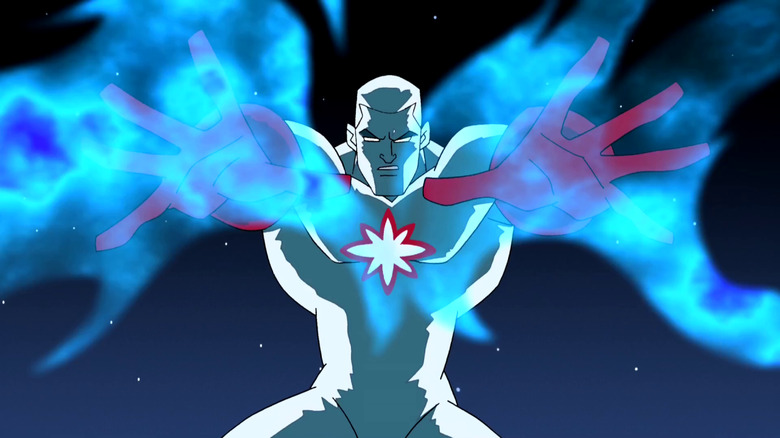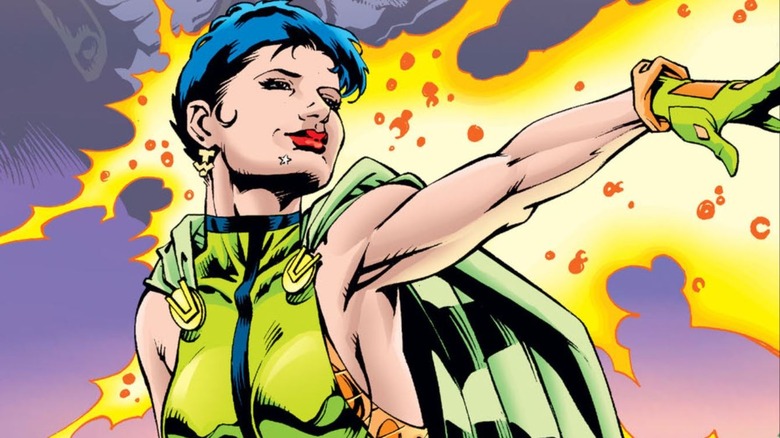DC Origin Stories We Want To See Onscreen
Between the burgeoning DC Extended Universe of films, the CW's long-running "Arrowverse" of television, and DC's storied history of beloved animated series and movies, there are a surprisingly limited amount of characters who haven't had their origin stories told onscreen in one form or another. However, there are still some important figures in DC Comics' universe of characters who feel like they could flourish if given their chance in the spotlight.
Some of these characters are long-standing members of famous comic book teams who have never managed to emerge from that shadow. Others are long-standing arch-villains who have an origin worth telling on its own, without the famous hero they are most often associated with. Whether it's a primordial, eldritch being from beyond time itself or "just" another supe in a suit, these characters have stories worth telling in any medium, and hopefully audiences will start seeing them sooner rather than later.
The Martian Manhunter
Created by Joseph Samachson and Joe Certa in 1955's "Detective Comics" #225, the Martian Manhunter is one of DC Comics' most underrated and unique properties. Unintentionally and irreversibly stolen from his home planet by a scientist's teleportation experiment, J'onn J'onzz was trapped on Earth in the height of 1950's paranoia.
To say that J'onn was alone on Earth would be an understatement. Mars was a utopic society of telepaths founded upon their unique, global interconnectedness. Then it was gone, and he was truly alone for the first time in his life. On Mars, J'onn had been a "manhunter," so on Earth he adopted the guise of Police Detective John Jones, employing his powers to foil evil and bring closure to its many victims. The story of J'onn not only surviving, but choosing to help this new world that fears and hates his true self, could make for an amazing film or TV show.
What would allow this story to really transcend, however, is how different it could be from anything else that fans are currently seeing. A Martian Manhunter origin story could be a sci-fi noir detective film, one that would take the esoteric mythology, intricate history, and vivid landscapes of Mars and contrast them sharply with the dark, littered streets of Chicago and McCarthyism in its prime. Throw in the possible destruction of Mars, and his status as a society's last surviving citizen, and a J'onn J'onzz origin story has all the pathos it needs to grip its audience from start to finish.
Icon and Rocket
One of Milestone Comics' most underrated creations, Icon was originally an alien being named "Arnus," jettisoned from an exploding starliner in an escape pod as an infant and crash landed on Earth in a cotton field in the southern United States in 1839. Arnus was discovered and adopted by an enslaved woman named Miriam, who named the child "Augustus Freeman" and raised him as her own.
Functionally immortal, Augustus lived undetected amongst humans well into the present day — until he met a young, idealistic teenager named Raquel Ervin. When she saw what Augustus could do after an ill-advised attempt to break into his house, she convinced him to use his powers openly as a genuine superhero, with herself as his sidekick using alien technology from his escape pod. Together, they became Icon and Rocket, heroes of Dakota City and beyond.
Icon was basically Milestone's Superman, and with three separate projects set to feature the Man of Steel, it's almost a wonder that a character like Icon hasn't been given anything beyond passing cameos in "Young Justice." Icon lived through slavery, the Civil War, Emancipation, Reconstruction, Jim Crow, both of the World Wars, the Civil Rights Movement, Black Lives Matter, and so much more. Combine this with the class disparity between the wealthy Augustus and the impoverished Racquel, and any origin story featuring Icon and Rocket would have an endless amount of themes, history, and meaning to draw from.
The Spectre
The Spectre is one of DC Comics' oldest and most terrifying "heroes." The literal manifestation of "God's Spirit of Vengeance," the character was officially created in 1940 by Jerry Siegel and Bernard Baily in "More Fun Comics" #52, but his actual "first appearance" is technically in Exodus chapter 11, when the Hebrew God sent him to take the firstborn child of every family in Egypt so Pharaoh would finally free them.
From those ancient days, so the story goes, the Spectre served his lord faithfully but quickly grew too bloodthirsty, so his master bound him to a human host who would temper the spirit's wrath with mercy. Merged as one being, the two would work together to punish evildoers appropriately without going too far.
By the 1940s, the Spectre was bound to Jim Corrigan and was already showing how vicious his justice could be. A nearly-omnipotent being, the Spectre is essentially a horror movie monster for evildoers. But instead of random teens in the woods, he haunts the worst of humanity and ensures they die with horrific irony. For example, in the "Batman: Brave and the Bold" Season 2, Episode 12 episode "Gorillas in Our Midst," Batman defeats a villain who forced rats to commit his crimes, and the Spectre turns the criminal into cheese for his former slaves to consume alive.
The Spectre is a horrific creature, whose origin could be as captivating and frightening as his deeds of vengeance.
Sinestro
Long before he became the arch-nemesis of the Green Lantern Corps, Sinestro was an honored member himself. He protected his home planet, Korugar, for years, serving with distinction amid his planet's ingrained organized crime and corruption. Eventually, however, Sinestro had his fill. Believing that the Corps' code of ethics held it back from truly making a difference, Sinestro secretly cast them aside and conquered his planet in a matter of days. Criminals were caught, corrupt officials were ousted from office, and both were punished severely.
Behaving like an intergalactic Robin Hood, he took from those who had too much, and gave to those who had nothing at all. What the Corps saw as despotism, tyranny, theft, and murder, Sinestro saw as justice and equality — but by the time he was assigned to train a young new Green Lantern from Earth named Hal Jordan, he had become what he once sought to destroy.
Sinestro's conflict and friendship with Hal Jordan is a fascinating story that has been told before, but every time the story is told, Sinestro is already a villain. The tale is best told from Hal Jordan's perspective as he discovers his teacher's tyranny — just imagine a film that plays like "Training Day," but with superheroes. The story of a good man who eventually gives up his virtues in exchange for results is just too good to pass up.
Booster Gold
Bored of his dead-end job in the utopic 25th century, museum guard Michael Carter stole a slew of powerful artifacts from its exhibits and time traveled to the 21st century to become "the greatest hero you've never heard of." He quickly foiled an attempt to assassinate the president of the United States in the present day, earning him instant fame that he capitalized on with merchandising and commercial deals. Now both rich and famous, he managed to join the Justice League and become best friends with Ted Kord, the Blue Beetle, though most of his other teammates treated him like a joke.
Except, it was all a front ... eventually. After Ted Kord died, the famous Time Master Rip Hunter took Booster Gold under his wing and trained him to become a proper hero and protector of time itself. As Booster finally began to take the job seriously, he decided to keep and encourage his ridiculed reputation in our time, as a cover from his many enemies throughout history.
Booster's origin practically writes itself. Whether it is standing on its own or included as part of another film or series, his early, frivolous, self-serving attitude towards super-heroics would fit perfectly within the first two acts of the story until the combination of both Rip Hunter and some tragedy force him to finally get serious in the third and final act. Throw in Blue Beetle for good measure (there's already a movie of him reportedly in development), and DC fans would be lining up at the door.
Zatanna
One of the most famous stage magicians and illusionists to have ever lived, Zatanna Zatara has a dark secret that goes beyond her simply being the so-called "Mistress of Magic." She actually is a wizard, trained by her father from a young age; Zatanna can cast any spell by simply stating the desired effect backwards. If she wants to cast a fireball, she need only say, "Llaberif!" Her power is limited only by her imagination and her ability to speak.
For comic book readers, Zatanna is a fun, popular character with strong connections to many other prominent DC characters. John Constantine from "DC's Legends of Tomorrow" is a former boyfriend, she helped train Batman in escape artist techniques, and she's one of the most powerful members of the Justice League.
Her origin story isn't anything to scoff at, either. Her father, Giovanni Zatara, was a mystical superhero who raised his daughter in the same tradition until the evil sorceress Allura exiled him to another plane of existence. Now completely alone, Zatanna has to rely on her wit and skills as a magician to free her father and defeat Allura once and for all. Her story is fun, uncomplicated and could easily be adapted into a variety of mediums, genres, and styles. Whether it's a dark young adult film, a Harry Potter-style coming of age story, or the newest character in an Arrowverse series, Zatanna's origin story deserves to find a home.
Prometheus
Throughout his 80 years of publishing history, Batman has seen many villains strive to become "the evil Batman," but none have managed to embody the concept quite so well as Prometheus. To this day, nobody knows his real name — but if he's to be believed, he was the son of two bank robbers gunned down by police in a shootout right in front of his eyes. The shock of the event turned the boy's hair white, and he vowed to destroy the so-called "keepers of justice" and return power "to the people."
Created by Grant Morrison and Arnie Jorgensen in 1998's "New Year's Evil: Prometheus" #1, the character's backstory and motivation is obviously a mirrored version of Batman's, but what makes the character so interesting is the reason he chose his name. In Greek Mythology, Prometheus was a god who, in direct defiance of Zeus, brought fire down to man so they could grow, invent, and evolve. Enraged at this rebellion, Zeus trapped Prometheus to be tortured for all eternity, but it was too late.
DC's Prometheus sees the Justice League as the new "pantheon of gods" in the world, and wants nothing more than to bring them down to the same level as the rest of us. Armed with a helmet that can download skills and information directly into his head Matrix-style, he just might be able to do it.
Animal Man
Originally published in 1965's "Strange Adventures" #180, Buddy Baker became "Animal Man" after he gained the ability to directly channel the abilities of any animal that has ever existed on the planet Earth. A minor character until Grant Morrison revived the hero in 1988, Buddy Baker is an everyman figure who prioritizes his wife and children, but also makes time to advocate for vegetarianism and battle against ecological and animal abuse. In essence, he spent just as much time fighting polluters and corporations as he did supervillains.
The strange thing about Buddy Baker, however, is how ill-defined his origin actually was. Originally, Baker was just another relatively generic science fiction story. He wasn't necessarily meant to be a superhero, but was instead a man given powers by alien experiments in space. More modern interpretations have stated that, instead of aliens, Buddy is mystically connected to "The Red," the collective life force of all animals across the planet.
The most interesting twist to this, however, is that the ultimate villain of Grant Morrison's run was none other than himself. Usually referred to as "The Writer," this villain could alter Buddy Baker's reality however he saw fit, making the actual details of his origin nearly irrelevant.
While Animal Man might sound a bit goofy and like a cross between "Captain Planet" and "Manimal," if a new movie or TV show tapped into those origin stories, employing the contradictions to set up the Writer's reveal, it could be just the thing Animal Man needs to set him apart.
The Sandman
Before he wrote "American Gods," "Coraline," or "Good Omens," Neil Gaiman wrote "The Sandman." Originally a golden age hero who fought crime with an immobilizing "gas gun," Gaiman was hired to reinvigorate the character in the late '80s, being told he could not retain anything except the name.
Now, the Sandman was no longer human. He was an eternal being named Morpheus, the ruler of all dreams and stories. He is Dream of "the Endless," seven near-limitless beings who embody concepts of reality itself. They are older than even gods and far greater. However, in 1916, the unthinkable happened. Dream was accidentally captured during a moment of rare weakness by a group of British occultists who stole his most powerful artifacts. They managed to imprison him for decades before he finally escaped back to a world thrown into chaos by his long absence. Thus, Dream must, for the first time in millennia, change and grow as he mends the damage and puts things back in their rightful order.
Neil Gaiman's series is notoriously, famously long and complex. It has often been said to be "unfilmable" due to its crazy visuals, dense narratives, and often graphic content, but Netflix is trying its hand at a television series, and Audible has produced two multi-part audio drama adaptations of the series, leading to renewed interest in the property. Between the two, it's almost certain we'll see at least some version of this "origin" sooner rather than later.
Cassandra Cain
Though many moviegoers met a character named "Cassandra Cain" in 2020's "Birds of Prey," she was nothing at all like her comic book counterpart, and that version still deserves to have an origin story told onscreen.
Cassandra Cain was born when two of the deadliest assassins/martial artists on the planet decided to have a child in order to create the perfect body guard for Ra's al Ghul, the leader of the League of Assassins. To this end, Cassandra was forced to communicate everything through action and combat rather than speech.
Isolated from the world, Cassandra was one of the deadliest fighters to have ever lived by the age of eight, in large part due to her uncanny ability to perfectly read and predict the body language of those around her. She typically knows how her opponent will fight before they do, and is therefore always a step ahead.
When Cassandra killed a man on her first mission, however, she "read" his death as he felt it through his body language. The kill traumatized her, and she was repelled. Cassandra ran away, living as a quasi-nomad for nearly a decade before being discovered in Gotham City and taken in by Barbara Gordon. Realizing her potential, Barbara trained Cassandra in the other tools of crimefighting, sawed off some rough edges, and helped her become the new Batgirl.
The Question
A television investigative journalist in corrupt Hub City, Victor Sage quickly realized that there were some mysteries too dangerous to openly investigate. To this end, he worked with an old college professor to develop a vigilante persona who used a special mask that made it appear as if he simply didn't have a face. Now properly equipped to investigate even the most dangerous of conspiracies, Vic Sage named his alter ego "The Question," and became one of the DC Universe's most effective detectives.
At night, the Question would unearth skeletons in the closets of Hub City mob bosses, and by day he would report on the progress, effects, and exploits of his alter ego from the safety of his television news studio. After a near-death experience as the Question, however, he was finally given actual combat and detective training by Richard Dragon, who had trained many of Batman's partners. Emboldened by his new capabilities, Vic jumped from investigating street-level crimes to attacking the systemic corruption at the heart of every level of Hub City's government.
A unique, classic-style detective with a twist, The Question and his origin story would be the perfect excuse to inject mystery into DC's offerings completely unique from Batman. Whether the star of his own show or movie, or as a guest in someone else's, DC needs a gritty hero, and the Question is ready to provide the answer.
Captain Atom
Framed for a war crime he did not commit, United States Air Force Officer Nathaniel Adams was given a choice: stare down the barrel of a firing squad or "volunteer" for a dangerous experiment only slightly less likely to kill him. Desperate to clear his name, Adams chose to participate in an experiment that involved setting off a powerful nuclear warhead directly underneath him, with only the hull of an alien spaceship in between.
Supposedly, the experiment was meant to test the durability of the starship — but the test ultimately created one of earth's mightiest superheroes. Due to the strange combination of otherworldly metal and intense nuclear radiation, Adam bonded to the metal of the ship and absorbed energy from the blast, simultaneously granting him a new body as the explosion hurtled him a couple decades into the future.
Completely separated from his loved ones and stranded in a future with a military intent on blackmailing him, Nathaniel Adams became the US government's own personal "superhero." They controlled his every move and action, told him what to say, and sent him to destroy their enemies like a one-man ICBM. Eventually, Captain Atom rebelled against the agency, defeated their attempted replacement Major Force, and defected to join the JLA.
Tomorrow Woman
By far the most unique character on this list, Tomorrow Woman is one of Grant Morrison's most interesting creations from his highly acclaimed Justice League comic book series "JLA." Her creation, life, and death are told in just one issue of the series 1997's "JLA" #5. In the issue, Tomorrow Woman is created by the mad scientists T. O. Morrow and Professor Ivo, both longtime enemies of the League.
Previously, Ivo had created the dreaded "Amazo," a nearly unstoppable android who could copy the powers and abilities of any superhuman it came into contact with, and T. O. Morrow had created the Red Tornado, an android who had complete mastery over wind and eventually joined the Justice League. Together, the two men joined forces for the first time in an effort to finally destroy the League. Thus, they created "Tomorrow Woman," an android with the powers of telepathy and telekinesis, and whose artificial body was indistinguishable from the real thing.
Tomorrow Woman joined the Justice League and quickly became a valued, beloved member after joining them on several missions. When it came time for the mad scientists to release the secret "psi-bomb" that they had hidden in her body, however, the android decided that her creators were wrong. Turning against them, she destroyed herself to save the JLA, choosing freedom and good instead.
